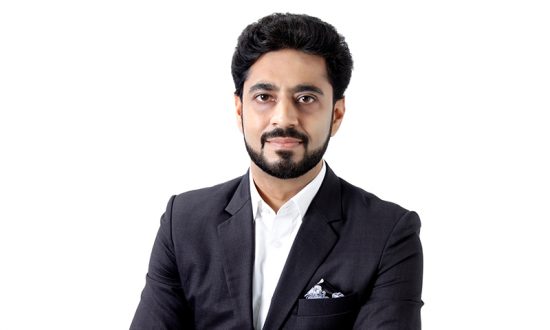Anurag Khosla has been spearheading the operations of Aetna India since November 2020 as the CEO. In this role, he is responsible for accelerating business growth and capturing the huge pace of change around digital healthcare in India. In his previous role at Optum Global solutions, Anurag was instrumental in scaling the company’s business and make it a leading global healthcare technology and IT services company. His business acumen and leadership helped OGS become a global market force and expand its reach in North & South American markets, Europe and Asia Pacific. Anurag has also served Wipro BPO at various positions of significance and was responsible for the launch and growth of its three verticals in the Healthcare and Technology Industry. Under Anurag’s leadership, the business has continued to perform well and serve almost 3.4 million customers across India with an ecosystem of primary healthcare services, all pivoting around vHealth at its core.
Telemedicine is an online diagnosis and treatment facility offering quality healthcare remotely. Healthcare providers use telemedicine to reduce doctor-patient visits, provide access to specialists anytime anywhere & support people with chronic conditions without the risk of transmitting infection. The Covid-19 pandemic has necessitated utilizing telemedicine for wider coverage and access to quality doctors.
Equitable and adequate distribution of healthcare services in India has been a pertinent challenge. 72% of the Indian population living in rural areas have limited access to quality healthcare facilities & well trained doctors & nursing care. The doctor-population ratio 1:1456 is also low as compared to WHO standards of 1:1000. While our urban centers are equipped with cutting-edge world-class medical facilities our rural folks rely only on primary health centers which lack even the basic infrastructure.
This is where telemedicine holds the key and can help narrow the rural-urban healthcare divide using the growing penetration of internet and lower data costs in rural India. Telemedicine provides the benefit of interacting with trained medical specialists with improved patient engagement. In the Indian context it is even more suitable as telemedicine can become an important conduit to impart medical knowledge and awareness to train local healthcare workers in remote areas who otherwise may not have access to such researched content.
With modern technology, telemedicine is being extended to other allied areas like electronic scheduling of diagnostic tests, remote patient monitoring especially for chronic conditions such as diabetes, blood pressure, and bronchial asthma of a person sitting at a remote location. Cloud-based systems, AI/ML and mobile integrated device support can prove to be game-changers for telemedicine. A patient can easily consult a cardiologist for a second opinion or reconfirm a doubtful ECG or consult a dietician for an ideal diet plan for a bed-ridden patient with multiple morbidities. Moreover, diagnostic services like endoscopy and radiology are also becoming accessible remotely and advancements in technology are leading to sharing of medical data, images like X-rays and scans for better consultations. Further improvements in internet infrastructure, cyber security and electronic medical records can make telemedicine even more effective and easy to use.
Another catalyst that can help bridge the urban-rural divide is to bring digital service assistance providers like citizen service centres, under the telemedicine ecosystem. Citizen Service centres through their centers at Tier 3 & 4 locations educate and help rural communities access essential services digitally. vHealth by Aetna has tied up with partners like Vakrangee to provide access to telemedicine & other healthcare services in rural areas through their kendras which is a perfect plug & play model for assisted telemedicine.
Telemedicine adoption also depends on the practitioners’ competence in specific skills like effective remote examination, ability to handle emergencies, accurate diagnosis, effective communication and empathy that can emulate physical consultation. Therefore, including telemedicine in undergrad and postgrad medical education will be essential for India to be able to scale up telemedicine services. Private players like vHealth by Aetna upskill their MBBS doctors for telemedicine using curriculum prepared in collaboration with Swiss telemedicine pioneer, Medgate.
Despite its many promising traits, telemedicine in India is yet to reach its full potential. The Government is working towards the adoption and promotion of telemedicine all over the country and has launched several projects like the National Health Helpline (Doctor on Call), Integrated Health Information Platform, Inter-operable Health Records and the National Digital Health Mission (NDHM) which includes Digi Doctor, health IDs, personal health records, and health facility registry. Further, the National Digital Health Authority (NDHA) is aggressively promoting telemedicine and regulation of e-health standards in India. Another important flagship Government program, e-Sanjeevani is a doctor to doctor telemedicine system that has been deployed in the entire country under Ayushman Bharat Scheme, giving easy access to various facilities like patient registration, audio-video consultation, e-prescription, and SMS/mail notifications.
Like the Government, most healthcare providers in India are following organic strategies like new service launches, providing add-on facilities and services to their clients, improvising their telemedicine services and integrating it with AI/ML technology to enhance treatment delivery and create new models of care. Encouraged by the success of telemedicine during the pandemic and recognition of it by all stakeholders in the value chain, its growth in India is likely to persevere and play a pivotal role in providing access to Affordable & Quality Healthcare for all citizens.


